
We provide in two formats. Download PDF & Practice Tests. Pass Microsoft AZ-103 Exam quickly & easily. The AZ-103 PDF type is available for reading and printing. You can print more and practice many times. With the help of our product and material, you can easily pass the AZ-103 exam.
Check AZ-103 free dumps before getting the full version:
NEW QUESTION 1
Click to expand each objective. To connect to the Azure portal, type https://portal.azure.com in the browser address bar.


When you are finished performing all the tasks, click the ‘Next’ button.
Note that you cannot return to the lab once you click the ‘Next’ button. Scoring occur in the background while you complete the rest of the exam.
Overview
The following section of the exam is a lab. In this section, you will perform a set of tasks in a live environment. While most functionality will be available to you as it would be in a live environment, some functionality (e.g., copy and paste, ability to navigate to external websites) will not be possible by design.
Scoring is based on the outcome of performing the tasks stated in the lab. In other words, it doesn’t matter how you accomplish the task, if you successfully perform it, you will earn credit for that task. Labs are not timed separately, and this exam may have more than one lab that you must complete. You can use as much time as you would like to complete each lab. But, you should manage your time appropriately to ensure that you are able to complete the lab(s) and all other sections of the exam in the time provided.
Please note that once you submit your work by clicking the Next button within a lab, you will NOT be able to return to the lab.
To start the lab
You may start the lab by clicking the Next button.
You plan to store media files in the rg1lod7523691n1 storage account.
You need to configure the storage account to store the media files. The solution must ensure that only users who have access keys can download the media files and that the files are accessible only over HTTPS.
What should you do from Azure portal?
Answer:
Explanation: We should create an Azure file share.
Step 1: In the Azure portal, select All services. In the list of resources, type Storage Accounts. As you begin typing, the list filters based on your input. Select Storage Accounts.
On the Storage Accounts window that appears.
Step 2: Locate the rg1lod7523691n1 storage account.
Step 3: On the storage account page, in the Services section, select Files.
Step 4: On the menu at the top of the File service page, click + File share. The New file share page
drops down.
Step 5: In Name type myshare. Click OK to create the Azure file share.
References: https://docs.microsoft.com/en-us/azure/storage/files/storage-how-to-use-files-portal
NEW QUESTION 2
HOTSPOT
You create a virtual machine scale set named Scale1. Scale1 is configured as shown in the following exhibit.
Use the drop-down menus to select the answer choice that completes each statement based on the information presented in the graphic.
Answer:
Explanation: Box 1:
The Autoscale scale out rule increases the number of VMs by 2 if the CPU threshold is 80% or higher. The initial instance count is 4 and rises to 6 when the 2 extra instances of VMs are added.
Box 2:
The Autoscale scale in rule decreases the number of VMs by 4 if the CPU threshold is 30% or lower. The initial instance count is 4 and thus cannot be reduced to 0 as the minimum instances is set to 2. Instances are only added when the CPU threshold reaches 80%.
References:
https://docs.microsoft.com/en-us/azure/azure-monitor/platform/autoscale-overview https://docs.microsoft.com/en-us/azure/azure-monitor/platform/autoscale-best-practices https://docs.microsoft.com/en-us/azure/azure-monitor/platform/autoscale-common-scale-patterns
NEW QUESTION 3
Overview
The following section of the exam is a lab. In this section, you will perform a set of tasks in a live environment. While most functionality will be available to you as it would be in a live environment, some functionality (e.g., copy and paste, ability to navigate to external websites) will not be possible by design.
Scoring is based on the outcome of performing the tasks stated in the lab. In other words, it doesn’t matter how you accomplish the task, if you successfully perform it, you will earn credit for that task. Labs are not timed separately, and this exam may have more than one lab that you must complete. You can use as much time as you would like to complete each lab. But, you should manage your time appropriately to ensure that you are able to complete the lab(s) and all other sections of the exam in the time provided.
Please note that once you submit your work by clicking the Next button within a lab, you will NOT be able to return to the lab.
To start the lab
You may start the lab by clicking the Next button.
You plan to connect several virtual machines to the VNET01-USEA2 virtual network.
In the Web-RGlod8095859 resource group, you need to create a virtual machine that uses the Standard_B2ms size named Web01 that runs Windows Server 2021. Web01 must be added to an availability set.
What should you do from the Azure portal?
Answer:
Explanation: Answer:
See explanation below.
Step 1. Choose Create a resource in the upper left-hand corner of the Azure portal.
Step 2. In the Basics tab, under Project details, make sure the correct subscription is selected and then choose Web-RGlod8095859 resource group
Step 3. Under Instance details type/select: Virtual machine name: Web01
Image: Windows Server 2021 Size: Standard_B2ms size Leave the other defaults.
Step 4. Finish the Wizard
NEW QUESTION 4
You are the global administrator for an Azure Active Directory (Azure AD) tenant named adatum.com. From the Azure Active Directory blade, you assign the Conditional Access Administrator role to a user You need to ensure that Admin1 has just-in-time access as a conditional access administrator.
What should you do next?
Answer: D
Explanation: Require MFA for admins is a baseline policy that requires MFA for the following directory roles:
Global administrator
SharePoint administrator
Exchange administrator
Conditional access administrator
Security administrator References:
https://docs.microsoft.com/en-us/azure/active-directory/conditional-access/baseline-protection
NEW QUESTION 5
HOTSPOT
You have peering configured as shown in the following exhibit.
Use the drop-down menus to select the answer choice that completes each statement based on the information presented in the graphic.
NOTE: Each correct selection is worth one point.
Answer:
Explanation: Box 1: vNET6 only
Box 2: Modify the address space
The virtual networks you peer must have non-overlapping IP address spaces.
References: https://docs.microsoft.com/en-us/azure/virtual-network/virtual-network-manage- peering#requirements-and-constraints
NEW QUESTION 6
HOTSPOT
You have an Azure subscription named Subscroption1. In Subscription1, you create an alert rule named Alert1.
The Alert1 action group is configured as shown in the following exhibit.
Alert1 alert criteria is triggered every minute.
Use the drop-down menus to select the answer choice that completes each statement based on the information presented in the graphic.
NOTE: Each correct selection is worth one point.
Answer:
Explanation: Box 1: 60
One alert per minute will trigger one email per minute. Box 2: 12
No more than 1 SMS every 5 minutes can be send, which equals 12 per hour.
Note: Rate limiting is a suspension of notifications that occurs when too many are sent to a particular phone number, email address or device. Rate limiting ensures that alerts are manageable and actionable.
The rate limit thresholds are:
SMS: No more than 1 SMS every 5 minutes. Voice: No more than 1 Voice call every 5 minutes. Email: No more than 100 emails in an hour.
Other actions are not rate limited. References:
https://github.com/MicrosoftDocs/azure-docs/blob/master/articles/monitoring-and- diagnostics/monitoring-overview-alerts.md
NEW QUESTION 7
Overview
The following section of the exam is a lab. In this section, you will perform a set of tasks in a live environment. While most functionality will be available to you as it would be in a live environment, some functionality (e.g., copy and paste, ability to navigate to external websites) will not be possible by design.
Scoring is based on the outcome of performing the tasks stated in the lab. In other words, it doesn’t matter how you accomplish the task, if you successfully perform it, you will earn credit for that task. Labs are not timed separately, and this exam may have more than one lab that you must complete. You can use as much time as you would like to complete each lab. But, you should manage your time appropriately to ensure that you are able to complete the lab(s) and all other sections of the exam in the time provided.
Please note that once you submit your work by clicking the Next button within a lab, you will NOT be able to return to the lab.
To start the lab
You may start the lab by clicking the Next button.
You plan to back up all the Azure virtual machines in your Azure subscription at 02:00 Coordinated Universal Time (UTC) daily.
You need to prepare the Azure environment to ensure that any new virtual machines can be configured quickly for backup. The solution must ensure that all the daily backups performed at 02:00 UTC are stored for only 90 days.
What should you do from the Azure portal?
Answer:
Explanation: Answer:
See explanation below.
Task A: Create a Recovery Services vault (if a vault already exists skip this task, go to Task B below) A1. From Azure Portal, On the Hub menu, click All services and in the list of resources, type Recovery Services and click Recovery Services vaults.
If there are recovery services vaults in the subscription, the vaults are listed. A2. On the Recovery Services vaults menu, click Add.
A3. The Recovery Services vault blade opens, prompting you to provide a Name, Subscription, Resource group, and Location
Task B.
B1. On the Recovery Services vault blade (for the vault you just created), in the Getting Started section, click Backup, then on the Getting Started with Backup blade, select Backup goal.
The Backup Goal blade opens. If the Recovery Services vault has been previously configured, then the Backup Goal blades opens when you click Backup on the Recovery Services vault blade.
B2. From the Where is your workload running? drop-down menu, select Azure.
B3. From the What do you want to backup? menu, select Virtual Machine, and click OK.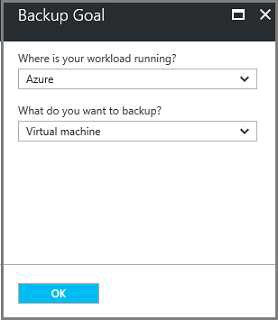
B4. Finish the Wizard.
Task C. create a backup schedule
C1. Open the Microsoft Azure Backup agent. You can find it by searching your machine for Microsoft Azure Backup.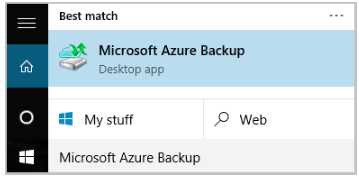
C2. In the Backup agent's Actions pane, click Schedule Backup to launch the Schedule Backup Wizard.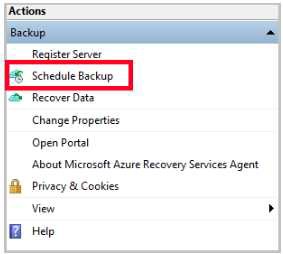
C3. On the Getting started page of the Schedule Backup Wizard, click Next.
C4. On the Select Items to Backup page, click Add Items. The Select Items dialog opens.
C5. Select Blob Storage you want to protect, and then click OK. C6.In the Select Items to Backup page, click Next.
On the Specify Backup Schedule page, specify Schedule a backup every: day
At the following times: 2.00 AM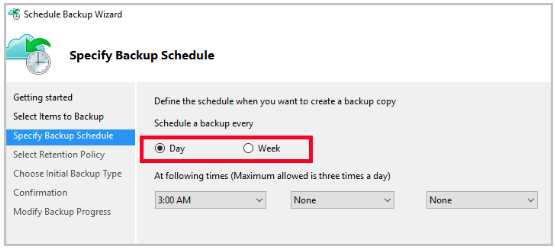
C7. On the Select Retention Policy page, set it to 90 days, and click Next.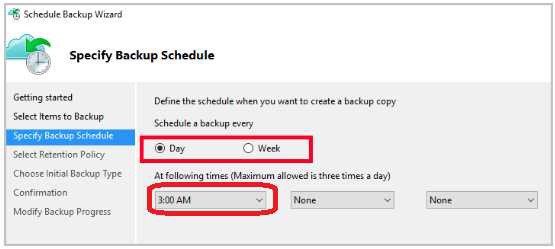
C8. Finish the Wizard. References:
https://docs.microsoft.com/en-us/azure/backup/backup-configure-vault
NEW QUESTION 8
HOTSPOT
You need to identify the storage requirements for Contoso.
For each of the following statements, select Yes if the statement is true. Otherwise, select No.
NOTE: Each correct selection is worth one point.
Answer:
Explanation: Box 1: Yes
Contoso is moving the existing product blueprint files to Azure Blob storage.
Use unmanaged standard storage for the hard disks of the virtual machines. We use Page Blobs for these.
Box 2: No
Box 3: No
NEW QUESTION 9
You need to configure AG1. What should you create?
Answer: C
Explanation: References:
https://docs.microsoft.com/en-us/azure/application-gateway/application-gateway-create-url-route- portal
NEW QUESTION 10
You have an Azure subscription named Subcription1 that contains a virtual network named VNet1. VNet1 is in a resource group named RG1.
Subscription1 has a user named User1. User1 has the following roles:
Reader
Security Admin
Security Reader
You need to ensure that User1 can assign the Reader role for VNet1 to other users. What should you do?
Answer: C
Explanation: References:
https://docs.microsoft.com/en-us/azure/role-based-access-control/built-in-roles
NEW QUESTION 11
Note: This question is part of a series of questions that present the same scenario. Each question in the series contains a unique solution that might meet the stated goals. Some question sets might have more than one correct solution, while others might not have a correct solution.
After you answer a question in this section, you will NOT be able to return to it. As a result,
these questions will not appear in the review screen.
You have an Azure subscription that contains 10 virtual networks. The virtual networks are hosted in separate resource groups.
Another administrator plans to create several network security groups (NSGs) in the subscription.
You need to ensure that when an NSG is created, it automatically blocks TCP port 8080 between the virtual networks.
Solution: From the Resource providers blade, you unregister the Microsoft.ClassicNetwork provider. Does this meet the goal?
Answer: A
NEW QUESTION 12
HOTSPOT
You have an Azure Migrate project that has the following assessment properties:
Target location: East US
Storage redundancy: Locally redundant
Comfort factor: 2.0
Performance history: 1 month
Percentile utilization: 95th
Pricing tier: Standard
Offer: Pay as you go
You discover the following two virtual machines:
A virtual machine named VM1 that runs Windows Server 2021 and has 10 CPU cores at 20 percent utilization
A virtual machine named VM2 that runs Windows Server 2012 and has four CPU cores at 50
percent utilization
How many CPU cores will Azure Migrate recommend for each virtual machine? To answer, select the appropriate options in the answer area.
NOTE: Each correct selection is worth one point.
Answer:
Explanation: The equation is: ‘core usage x comfort factor’. The comfort factor is 2.0.
So VM 1 is 10 cores at 20% utilization which equals 2 cores. Multiply that the comfort factor and you get 4 cores.
VM 2 is 4 cores at 50% utilization which equals 2 cores. Multiply that the comfort factor and you get 4 cores.
Case Study: 1 ADatum Corporation
Overview
ADatum Corporation is a financial company that has two main offices in New York and Los Angeles. ADatum has a subsidiary named Fabrikam, Inc. that shares the Los Angeles office.
ADatum is conducting an initial deployment of Azure services to host new line-of-business applications and is preparing to migrate its existing on-premises workloads to Azure.
ADatum uses Microsoft Exchange Online for email. On-Premises Environment
The on-premises workloads run on virtual machines hosted in a VMware vSphere 6 infrastructure. All the virtual machines are members of an Active Directory forest named adatum.com and run Windows Server 2021.
The New York office an IP address of 10.0.0.0/16. The Los Angeles office uses an IP address space of 10.10.0.0/16.
The offices connect by using a VPN provided by an ISP. Each office has one Azure ExpressRoute
circuit that provides access to Azure services and Microsoft Online Services. Routing is implemented by using Microsoft peering.
The New York office has a virtual machine named VM1 that has the vSphere console installed. Azure Environment
You provision the Azure infrastructure by using the Azure portal. The infrastructure contains the resources shown in the following table.
AG1 has two backend pools named Pool11 and Pool12. AG2 has two backend pools named Pool21 and Pool22.
Planned Changes
ADatum plans to migrate the virtual machines from the New York office to the East US Azure region by using Azure Site Recovery.
Infrastructure Requirements
ADatum identifies the following infrastructure requirements:
A new web app named App1 that will access third-parties for credit card processing must be deployed.
A newly developed API must be implemented as an Azure function named App2. App2 will use a blob storage trigger. App2 must process new blobs immediately.
The Azure infrastructure and the on-premises infrastructure and the on-premises infrastructure must be prepared for the migration of the VMware virtual machines to Azure.
The sizes of the Azure virtual machines that will be used to migrate the on-premises workloads must be identified.
All migrated and newly deployed Azure virtual machines must be joined to the adatum.com domain.
AG1 must load balance incoming traffic in the following manner:
1. http://corporate.adatum.com/video/* will be load balanced across Pool11.
2. http://corporate.adatum.com/images/* will be load balanced across Pool12.
AG2 must load balance incoming traffic in the following manner:
1. http://www.adatum.com will be load balanced across Pool21.
2. http://www.fabrikam.com will be load balanced across Pool22.
ER1 must route traffic between the New York office and the platform as a service (PaaS) services in the East US Azure region, as long as ER1 is available.
ER2 must route traffic between the Los Angeles office and the PaaS sevices in the West US region, as long as ER2 is available.
ER1 and ER2 must be configured to fail over automatically.
Application Requirements
App2 must be able to connect directly to the private IP addresses of the Azure virtual machines. App2 will be deployed directly to an Azure virtual network.
Inbound and outbound communications to App1 must be controlled by using NSGs.
Pricing Requirements
ADatum identifies the following pricing requirements:
The cost of App1 and App2 must be minimized.
The transactional charges of Azure Storage account must be minimized.
NEW QUESTION 13
HOTSPOT
You plan to deploy five virtual machines to a virtual network subnet.
Each virtual machine will have a public IP address and a private IP address. Each virtual machine requires the same inbound and outbound security rules.
What is the minimum number of network interfaces and network security groups that you require? To answer, select the appropriate options in the answer area.
NOTE: Each correct selection is worth one point.
Answer:
Explanation: Box 1: 10
One public and one private network interface for each of the five VMs. Box 2: 1
You can associate zero, or one, network security group to each virtual network subnet and network interface in a virtual machine. The same network security group can be associated to as many subnets and network interfaces as you choose.
References:
https://docs.microsoft.com/en-us/azure/virtual-network/security-overview
NEW QUESTION 14
DRAG DROP
You have an Azure subscription that contains a storage account.
You have an on-premises server named Server1 that runs Window Server 2021. Server1 has 2 TB of data.
You need to transfer the data to the storage account by using the Azure Import/Export service.
In which order should you perform the actions? To answer, move all actions from the list of actions to the answer area and arrange them in the correct order.
NOTE: More than one order of answer choices is correct. You will receive credit for any of the correct orders you select.
Answer:
Explanation: 
NEW QUESTION 15
You need to create a function app named corp7509086nl that supports sticky sessions. The solution must minimize the Azure-related costs of the App Service plan.
What should you do from the Azure portal?
Answer:
Explanation: Step 1:
Select the New button found on the upper left-hand corner of the Azure portal, then select Compute > Function App.
Step 2:
Use the function app settings as listed below. App name: corp7509086n1
Hosting plan: Azure App Service plan (need this for the sticky sessions)
Pricing tier of the the App Service plan: Shared compute: Free Step 3:
Select Create to provision and deploy the function app. References:
https://docs.microsoft.com/en-us/azure/azure-functions/functions-create-function-app-portal
NEW QUESTION 16
HOTSPOT
You have an Azure subscription named Subscription1. Subscription1 contains a virtual machine named VM1.
You install and configure a web server and a DNS server on VM1.
VM1 has the effective network security rules shown in the following exhibit.
Use the drop-down menus to select the answer choice that completes each statement based on the
information presented in the graphic.
NOTE: Each correct selection is worth one point.
Answer:
Explanation: 
NEW QUESTION 17
Your company registers a domain name of contoso.com.
You create an Azure DNS named contoso.com and then you add an A record to the zone for a host named www that has an IP address of 131.107.1.10.
You discover that Internet hosts are unable to resolve www.contoso.com to the 131.107.1.10 IP address.
You need to resolve the name resolution issue.
Solution: You modify the SOA record in the contoso.com zone Does this meet the goal?
Answer: A
Explanation: Modify the NS record, not the SOA record.
Note: The SOA record stores information about the name of the server that supplied the data for the zone; the administrator of the zone; the current version of the data file; the number of seconds a secondary name server should wait before checking for updates; the number of seconds a secondary name server should wait before retrying a failed zone transfer; the maximum number of seconds that a secondary name server can use data before it must either be refreshed or expire; and a default number of seconds for the time-to-live file on resource records.
References: https://searchnetworking.techtarget.com/definition/start-of-authority-record
NEW QUESTION 18
DRAG DROP
You have an on-premises network that you plan to connect to Azure by using a site-to-site VPN.
In Azure, you have an Azure virtual network named VNet1 that uses an address space of 10.0.0.0/16. VNet1 contains a subnet named Subnet1 that uses an address space of 10.0.0.0/24.
You need to create a site-to-site VPN to Azure.
Which four actions should you perform in sequence? To answer, move the appropriate actions from the list of actions to the answer area and arrange them in the correct order.
NOTE: More than one order of answer choices is correct. You will receive credit for any of the correct orders you select.
Answer:
Explanation: Note: More than one order of answer choices is correct.
Creating a local gateway (a logical object that represents the on-premise router) can be done at step 1, step 2 or step 3. The other three steps must be done in order: create gateway subnet then create VPN gateway then create the VPN connection. The VPN connection is a connection between the VPN gateway and the Local gateway.
P.S. Simply pass now are offering 100% pass ensure AZ-103 dumps! All AZ-103 exam questions have been updated with correct answers: https://www.simply-pass.com/Microsoft-exam/AZ-103-dumps.html (303 New Questions)